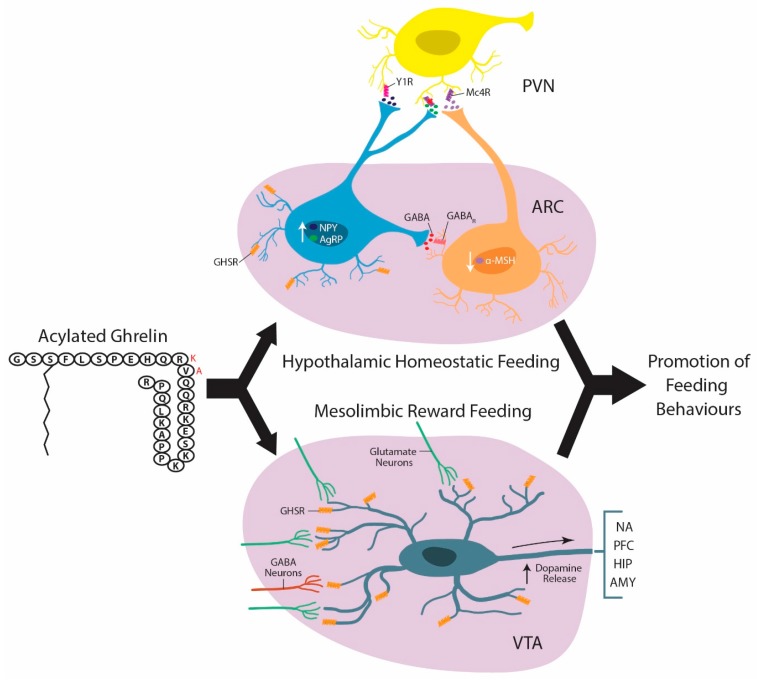Figure 2.
Over simplified illustration depicting the two main brain regions where acylated ghrelin (human ghrelin is black amino acid sequence and red letter substitution is rat) is proposed to target to initate neurocircuits that promote feeding behaviours: the arcuate nucleus (ARC) of the hypothalamus (HYP) and the ventral tegmental area (VTA). Within the ARC, ghrelin stimulates neuropeptide Y/agouti-related peptide (NPY/AGRP) neurons by binding growth hormone secretagogue receptors (GHSRs) on their surface. Once activated theses neurons produce and release γ-aminobutyric acid (GABA) which inhibits anorectic proopiomelanocortin (POMC) neurons,decreasing the release of the anorectic peptide α-melanocyte-stimulating hormone (α-MSH). This effectively reduces the quantity of α-MSH capable of binding to satiety promoting melanocortin 4 receptors (Mc4Rs). Concurrently, activated NPY/AGRP neurons increase their production and secretion of orexigenic peptides NPY and AGRP. NPY binds to neuropeptide Y receptor type 1 (Y1R) and AGRP antagonizes the binding of α-MSH at Mc4Rs. Together the reduction in anorectic peptide and enhancement of orexigenic ones work to reduce the activity of second order anorexigenic neurons in the paraventricular nucleus (PVN) to promote homeostatic feeding behaviours. Similarly, ghrelin also stimulates VTA dopamine (DA) neurons increasing the frequency and probability of DA release from their projections in the nucleus accumbens (NA), prefrontal cortex (PFC), hippocampus (HIP), and amygdala (AMY) to encourage mesolimbic reward feeding. Ghrelin activates these VTA dopamine neurons both directly by binding to GHSR receptors located on their surface and indirectly by increasing the ratio of excitatory to inhibitory synapses contacting them.

